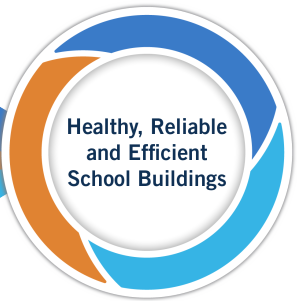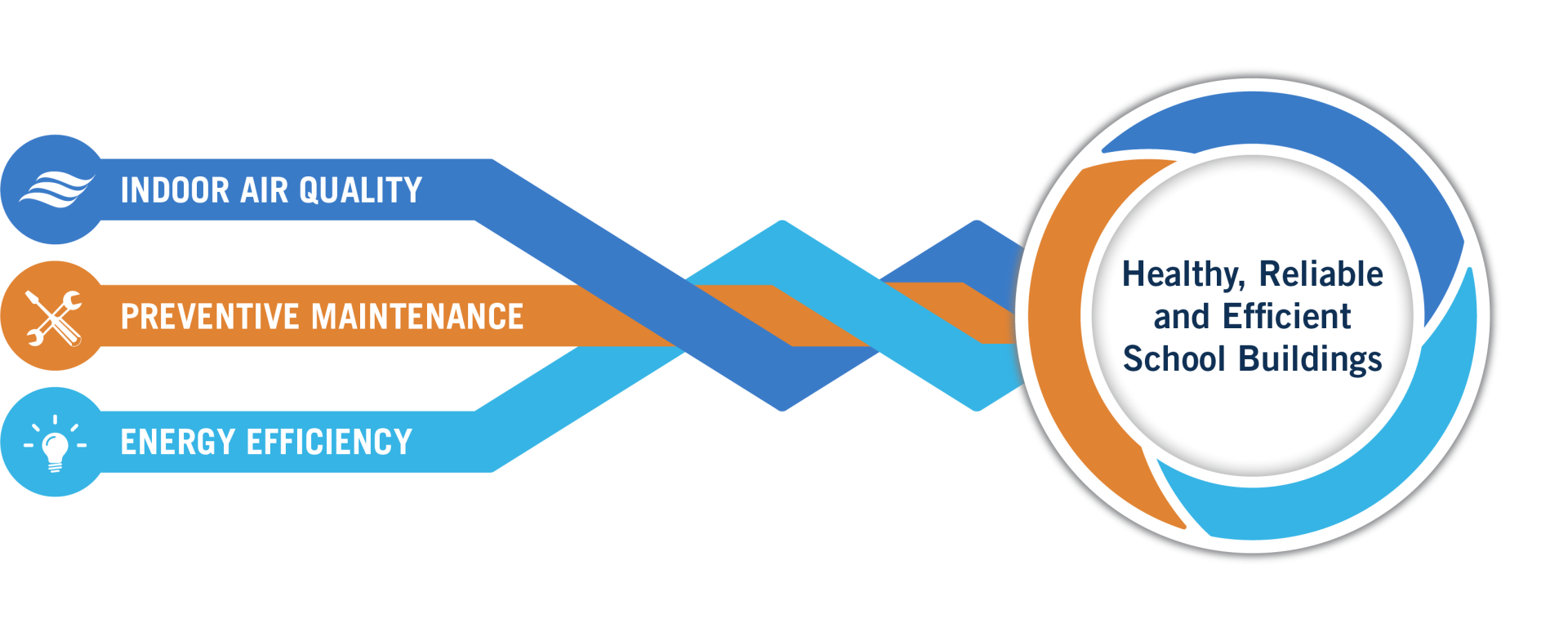
Posted by Johann Nacario — November 15, 2024 – The U.S. Environmental Protection Agency (EPA) recently celebrated $34 million in Inflation Reduction Act grants awarded to the five organizations across the country that will use these funds to work with school districts to improve indoor air quality (IAQ) in schools. EPA Mid-Atlantic Regional Administrator Adam Ortiz joined grantees at Horatio B. Hackett School in Philadelphia to congratulate them on their awards.
Jasmine Davenport, EPA Senior Advisor for Climate Justice, remarked:
EPA’s Indoor Air in Schools program stands as a beacon of hope, ensuring every child breathes clean air in their learning environment, advancing environmental justice by prioritizing health equity and fostering safer, healthier schools for all communities.
As part of the celebration, EPA and the grantees heard from leaders from the School District of Philadelphia (SDP) on their efforts to date to improve air quality, reduce pollutants, and reduce building costs. District leaders and school staff are already noting better attendance and school performance in buildings that have undergone upgrades.
Oz Hill, Deputy Superintendent of Operations at the School District of Philadelphia, commented:
We are grateful to the EPA for their investment to improve air quality in schools, like Philadelphia, and across the nation. The School District of Philadelphia is strategically working to upgrade HVAC systems and focus on expanding energy-saving initiatives, reducing emissions, and enhancing indoor environments across the district as we work to become the fastest improving, large urban school district.
The five grantees will soon begin their work to monitor and reduce indoor air pollution and greenhouse gas emissions at schools from kindergarten through grade 12 (K-12) in low-income, disadvantaged, and Tribal communities.
These grants to protect children’s health are made possible through the Biden-Harris Administration’s Inflation Reduction Act, the largest investment in climate action and environmental justice in history. These projects will help schools develop and implement comprehensive indoor air quality plans through training, education, capacity building and research and demonstration projects.
The following organizations received awards:
- The University of Utah will support the development of indoor air quality management and greenhouse gas reduction plans for schools in urban and rural areas in Utah and Nevada, as well as with the Northern Arapaho Tribe in Wyoming. This will be accomplished through energy efficiency assessments of school buildings, indoor/outdoor air pollutant monitoring, demonstration of effectiveness of air pollution reduction strategies, development of an IAQ school phone app, community engagement, training, educational activities, and by providing indoor air quality and greenhouse gas reduction guidance to schools.
- The American Lung Association will deploy the Clean Air School Challenge to raise awareness, educate, build capacity, increase implementation, and recognize the efforts of schools in low-income, disadvantaged, and Tribal communities nationwide as they implement comprehensive indoor air quality and greenhouse gas management plans.
- The New York State Department of Health and Health Research will provide capacity building in indoor air quality and greenhouse gas reduction in disadvantaged and Tribal schools throughout New York State and additional states across the country. The twoorganizations will draw on past experience to enable hundreds of disadvantaged and Tribal schools in New York to adopt sustainable IAQ management plans to make air quality improvements and greenhouse gas reductions that will improve the health and performance of many of New York’s 1.6 million disadvantaged students plus teachers and school staff.
- The Go Green Initiative will partner with the National School Boards Association and their state affiliates to provide education and training for school staff, administrators, and school board officials involved in improving school indoor air quality and reducing climate pollution across all 50 states, as well as providing targeted, intensive technical assistance and capacity building in Tribal and low-income school districts in all 10 EPA regions.
- The U.S. Green Building Council’s Center for Green Schools will build capacity among school district staff in low-income, disadvantaged and Tribal communities to establish indoor air quality management and greenhouse gas reduction plans. This work builds on long-running and successful support that the Center for Green Schools has provided to hundreds of school district staff, who collectively serve 9.3 million students. The program places direct emphasis on making capacity building and training activities more accessible to school district staff serving low-income, disadvantaged, and Tribal communities.
Background
Approximately one-sixth of the U.S. population attends or works in roughly 130,000 schools around the country and many of these schools do not have the resources and support needed to effectively prevent or solve indoor air quality problems. In fact, half of all K-12 students attend schools that do not have indoor air quality management plans or programs in place. Air quality in schools is of particular concern because children’s developing organ systems are often more sensitive to environmental stressors, children are frequently more heavily exposed to toxic substances in the environment than are adults, and children breathe more air in proportion to their body weight than adults.
There is substantial evidence that comprehensive management of indoor air quality in schools improves student academic performance and attendance, reduces the spread of airborne illnesses like COVID-19, lengthens the lifespan of building systems, and lowers greenhouse gas emissions from schools while providing significant cost savings through lower energy consumption. The $34 million in grant funding the EPA is announcing today will help highly qualified organizations in the field provide much-needed support to schools in overburdened communities across the country to put in place comprehensive indoor air quality management programs.
Learn more about the Grant Funding to Address Indoor Air Pollution at Schools. This page will be updated in the future with details on how schools can connect and partner with the grantees.
Learn more about how to improve IAQ at Schools.






